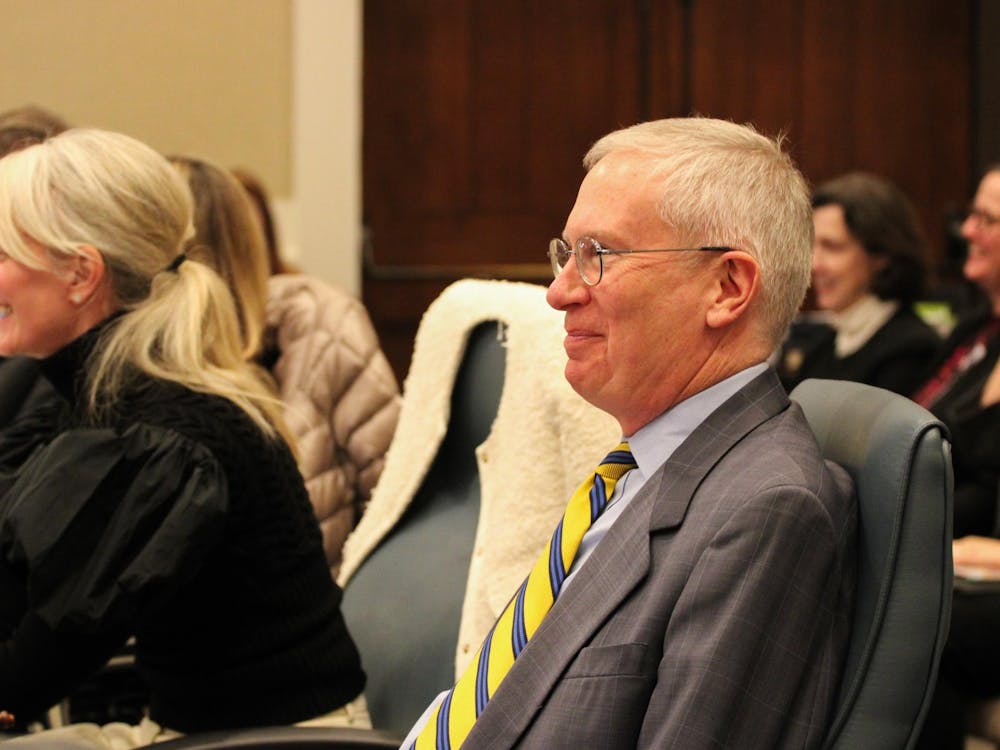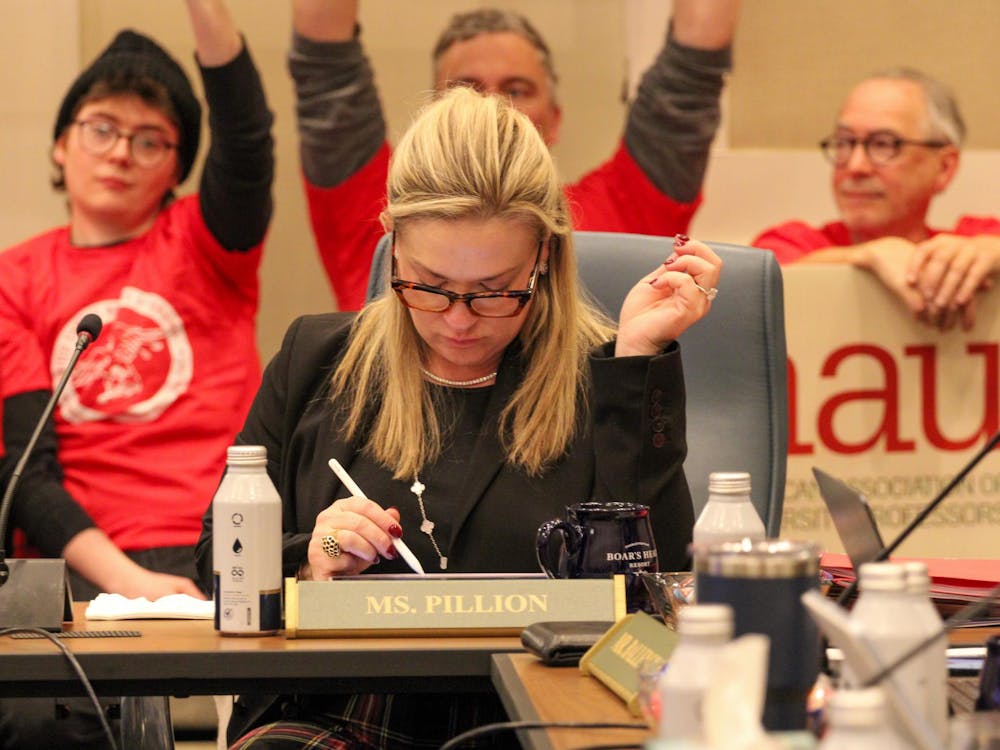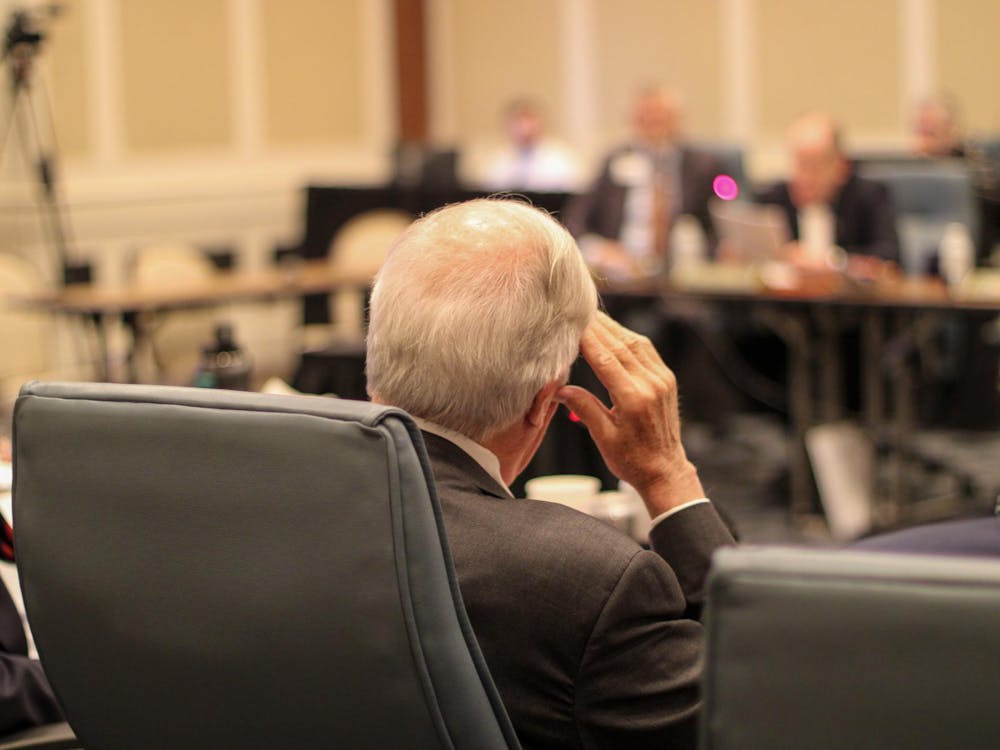With a number of ongoing and planned construction projects, the University has improved its communication with local government, its agencies and community residents, Charlottesville Mayor Dave Norris said, specifically noting the success of community-University relations concerning the South Lawn Project construction and unified emergency services.
Whenever the University has a development project, it works with Charlottesville City Council to make sure the project does not adversely affect the city, Norris said, noting that the University often seeks city input even when approval is not necessary.
The University has “been very good in recent years in notifying the city — and not just the city government but the neighborhoods and citizens,” Norris said, citing pre-development information as well as frequent updates for local residents. Though the city does not always agree with decisions made by the University and vice versa, there is always discussion between the two entities, he added.
University Architect David Neuman said the University holds community forums when it has development plans that will affect neighborhoods around the proposed project. For example, almost 300 community members attended a September forum about the South Lawn Project, he said, to learn more about the project and voice their concerns.
“There is a lot of good will, but [the relationship] requires a lot of listening because each [group] has a strong opinion about what they’re doing and why it’s a good thing, and sometimes it’s in conflict with what other people think,” Neuman said.
He added that the purpose of clear and frequent communication between the University and neighborhoods is to resolve any issues that may arise before they become significant or controversial.
City Manager Gary O’Connell said the city has been involved in many projects that the University has undertaken, such as the South Lawn Project. He noted that the University has been very careful about its development plans and making sure it recognizes city concerns.
“It’s pretty amazing that with the level of development going on that things have gone as smoothly as they have,” O’Connell said. “I think it’s a testament to the University being open ... about their plans ... I don’t think many universities do that.”
David Slutzky, Albemarle County Board of Supervisors member, said most of the University is within Albemarle County’s jurisdiction, not the City of Charlottesville’s and is therefore subject to the county’s zoning regulations.
“We’ve had a very constructive dialogue between the county and University, which has involved the city when appropriate,” Slutzky said. He noted that the University is always reasonable when it approaches the county to petition for permission to change the zoning of its property.
Slutzky noted that the University initially played a key role in getting city and county representatives to sit down together to discuss other issues of mutual interest. The City of Charlottesville, Albemarle County and the University signed the Three-Party Agreement in 1986, said Leonard Sandridge, University executive vice president and chief operating officer. The agreement, which outlines the relationship between the three parties, is “somewhat unique” among higher education institutions, he said.
O’Connell said the intent of the agreement was to provide a forum for regular and formal discussion between the three institutions.
A major feature of the Three-Party Agreement is the Planning & Coordination Council, which brings executives from the three groups together quarterly to discuss topics of mutual interest, University Community Relations Director Ida Lee Wootten said. PACC members include the city manager, two City Council members, the county executive, two members of the County Board of Supervisors, the University president and University chief operating officer, Sandridge said.
Neuman said the three parties try to be proactive in their approach to common problems and concerns by sharing information with one another in advance. He also noted that the University has a seat on the planning committees for both the city and the county, while the city and county have seats on the University’s planning committee.
“PACC is a real recognition that we share all the basic environmental and structural concerns,” Neuman stated. He also noted that PACC helps the city, county and University to coordinate essential services to the community. Some of the topics covered by these committees include construction projects, sustainability, transportation, storm water, sewage, infrastructure, and quality of life issues, Sandridge said.
Norris said “there is a joint interest in keeping this a safe, healthy, and prosperous community, so we tend to work well where there are opportunities for collaboration.”
One key area of collaboration is in providing unified emergency services, Sandridge said. Marjorie Sidebottom, University director of emergency preparedness, said the city, county and University have been working together for 20 years to create a joint emergency operations plan, which is now regarded as a national model.
“In terms of emergency preparation, there aren’t really any distinctions or lines” between the parties, she said, adding that “there are very few places that have ... a single plan” in the event of an emergency.
Some of the emergency provisions include a joint 911 center that is funded and run by all three entities, Sidebottom said.
In addition to committee meetings that cover topics such as emergency preparedness, many officials said they regularly meet one-on-one with other leaders to discuss common concerns. The University also seeks to plays a central role in the community, Norris said. He noted that the University has been involved in training local teachers and providing University student volunteers as tutors. Sandridge said the University tries to be a good neighbor, citing its voluntary payment of real estate taxes. As a state agency, the University is not required to pay real estate taxes, he said, but the University chooses to do so in order to foster good relations and make an investment in the city, adding that this has been well-received by the municipal governments.
The University also volunteers its services when the City or County needs help dealing with a certain issue with which the University has expertise; likewise the city and county help the University in similar situations, Sandridge said. Neuman also pointed out that the entities do not get overly involved in issues that do not concern them.
“There are certain issues that [city and county officials] feel are theirs and they want the University to respect that and likewise [for the University],” he said. “Each makes up its own mind, but with a good sense of consultation and collaboration. [The City and County] are respectful of our opinions, and [we are of theirs].”
Although the relationship between the three parties is strong, Norris said there are “any number of issues where there’s room for continued and expanded collaboration.”
Norris also noted that there recently has been more dialogue between the city government and the University’s Student Council recently about how to work together to address mutual concerns.
“We really do need to have a very close working relationship with the City of Charlottesville,” Student Council President Matt Schrimper said, noting this is the first year that Student Council has had a student liaison position on the City Council.
Schrimper said he hopes Student Council can work with the city government to address off-Grounds safety and off-Grounds housing in order to improve student life.
Colin Hood, Student Council’s liaison to the City Council, meanwhile, said there though there might have been a lack of communication between the organizations in the past, he hopes to improve the relationship.
O’Connell, though, emphasized that the relationship between the three primary parties is well-grounded. He said in the 22 years since the three-way agreement was signed, there has been a “pretty dramatic shift” in the relationship between the three entities, crediting the University’s willingness to change its approach to the relationship as instrumental in the shift and citing the transparency of the University in sharing its plans with the government and community as a major factor in that change.
“I’ve talked to a lot of city managers in university towns across the country, and I think our [relationship] is one of the best,” O’Connell said.






